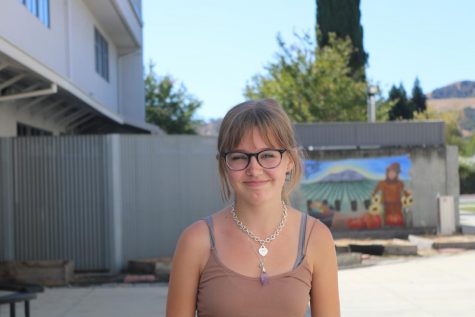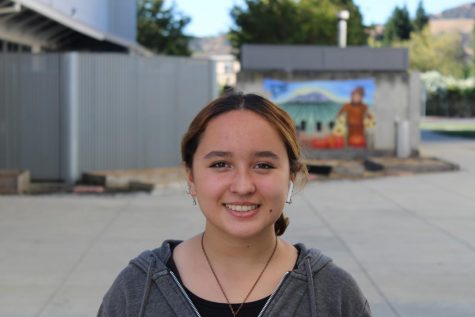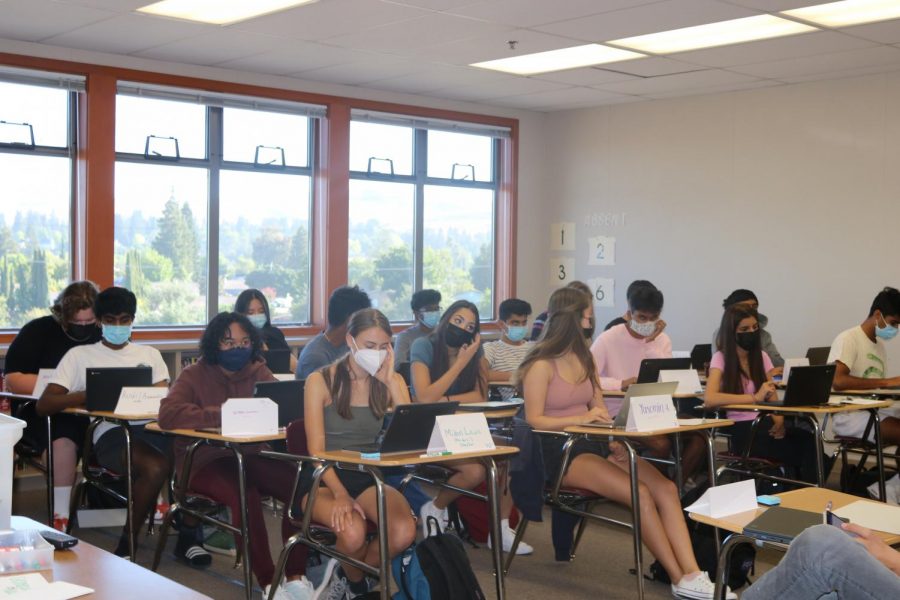Students provided with Chromebooks
District uses COVID-19 funds to buy devices
Students work on their Chromebooks, which were provided by the school district this year for the first time.
San Ramon Valley Unified School District has issued more than 32,000 electronic devices this year, with second through 12th graders receiving a Google Chromebook.
Cal High assistant principal Tucker Farrar said students in transitional kindergarten through first grade received iPads for school use.
The district was able to purchase devices for all students due to state funding provided in March 2020 to address the transition to online school because of COVID-19.
The state allocated $16.2 million to the district, including more than $10 million for technology, said Greg Medici, the district’s chief business officer.
Farrar said the district provided the technology to help create greater equity among students by giving all of them equal access to online tools and curriculum. Chromebooks have since been integrated into most classes on campus.
“The pandemic made them [the school district] realize that all students need devices,” Farrar said.
While providing students with chromebooks is beneficial, the rollout of these devices didn’t go smoothly for everyone.
Freshman Lauren Ko was one of many students who received the wrong charger for her chromebook.
Ko said it took about a week for her to receive the correct charger. During that week, she borrowed other students’ chargers, used her phone for virtual classwork, and copied online assignments onto paper.
“It was especially hard during the first two weeks of school because we started to use Schoology instead of Schooloop,” Ko said. “My chromebook didn’t stay charged long and it was a consistent problem.”
Freshman Onyi Onyema has mixed feelings about her chromebook. Onyema says It is helpful in class because much of her classwork is online, but there are also some inconveniences.
Turning on her laptop is time consuming and it loads slowly. The battery drains very quickly, making it troublesome to constantly use.
Farrar said that in the future, the district will provide one type of charger for everyone, instead of different types for different students.
“Each year the distribution process will get easier as we get used to this system,” Farrar said.
English teacher Abraham Kim said at the beginning of the year there were a lot of issues, but students’ use of chromebooks in class is going more smoothly now.
“The only negative I’ve noticed was that some students are getting distracted on other sites during class,” Kim said.
Many teachers agree that logging onto Schoology and other online resources during the first week of school was very messy.
Algebra teacher Saumya Rakesh said she faced problems with two of her online resources, Big Ideas Math and Clever. Many of her students couldn’t log on because the apps weren’t set on the portal, and other students had trouble logging onto the portal in general.
Rakesh said these problems were resolved through the IT help line, searching online, and students helping each other. The IT help line is a platform run by the district that allows students, staff, and parents to get help with technology problems.

Freshmen Katya Vial is a first year reporter for the Californian. She enjoys writing non-fiction and fiction. She likes to go to the beach, reading, and...

Erica Dembrowicz is in her first year taking photos for The Californian and is a junior at Cal High. Out of school she likes to read, listen to music,...





